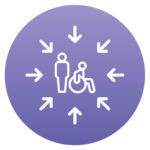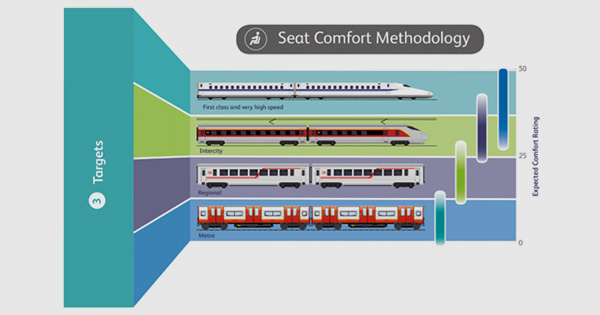Seat comfort: measure it to improve it

Relevant RTS critical priority(ies):
Easy to use for all
For a long time, seat specifications focussed on crashworthiness and fire performance. This project set out to ensure that seat specifications also cater for passenger comfort by defining objective and measurable requirements and targets for it.
Thanks to research completed by RSSB in 2019, we now have the first ever method to measure seat comfort on trains. This will help to ensure that seat comfort – a key aspect of passengers’ comfort and journey experience – can be properly specified and assessed.
Now all those involved in the design, selection and appraisal of train seats can use a common language and an evidence-based scoring that:
- Includes a set of minimum seat comfort requirements that fit the adult 5th to 95th percentile population
- Uses a robust, repeatable test methodology to measure seat’s dimensions and seat pad hardness
- Includes a seat attractiveness and appearance requirement that is based on passengers’ feedback on the seat look and feel
- Provides different target scores for different journey types from metro to high-speed.
The use of the seat comfort scoring methodology, including the minimum set of seat comfort requirements and the target scores for different journey categories, will be included in the next revision of the Key Train Requirements (KTR Issue 6, expected release November 2020).
All details required to apply the seat comfort scoring methodology are in the final report available from the RSSB website. The scoring methodology has already been used by rolling stock manufacturers such as CAF and Alstom. Alstom is using the seat comfort specification to assist in the refurbishment of the Class 390 Pendolino fleet, which involves the replacement of 25,000 standard class seats.
Transport for the East Midlands has directly referenced and incorporated sections of the research into the specification for East Midland Railway’s rolling stock.
Using the research at contract specification and design stages makes more comfortable seats cost effective, improving customer journeys for many years to come.
Back



